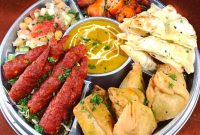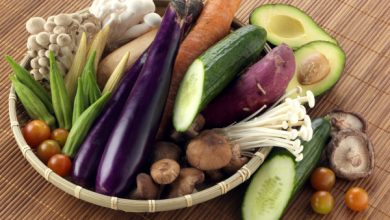Bangladeshi cuisine
The culinary traditions of ancient Bengal are closely related to the cuisine of the peoples of India and the entire subcontinent. By and large, until the XIII-XVI centuries, the peoples of modern Bangladesh did not stand out among other inhabitants of India – until now, more than 80% of “Indian” restaurants in Europe offer exactly Bangladeshi cuisine and no one finds the slightest crime in this.
However, with the spread of Islam, the local cuisine began to trace more and more products and methods of food processing characteristic of Muslim cuisine, which was also aided by the region’s relative isolation from the “mainland” India. Long-term British rule has brought many characteristic European recipes here. Therefore, these days, local cuisine is deservedly considered one of the most diverse in South Asia.
And at the same time, which is typical, Bangladeshis use a completely traditional set of products – rice, lentils (“dal”), mustard and mustard oil, a special type of wheat flour (“attar”), legumes, all kinds of vegetables and grains that grow in abundance on local fertile soils, river and sea fish, poultry, various seafood, coconut (“marcel”) and more. Despite long traditions.
meat is nowadays quite rare due to its high cost for this poor country, although beef can be seen on the table here much more often than in neighboring India, and there are simply not many traditional recipes for its preparation. Often, dishes are prepared from various “exotic” ingredients, such as insects or snake meat.

The cooking methods are also very simple – steaming, frying or stewing, and everything else depends on the right choice of spices and the selection of ingredients – it is the combination of excellent spices with simple and cheap products that makes the local cuisine what it is.
The hallmark of Bangladeshi cuisine is rice. By and large, its preparation methods are no different from those used in India or Thailand. Rice is usually steamed, rarely boiled and even less often fried, although this is not excluded. But due to the use of a huge amount of spices, even the simplest dish made from this cereal can have several dozen, if not hundreds, varieties.
Rice here replaces both bread and meat, and much more, especially for the bulk of the population living practically below the poverty line. Special attention should be paid to the traditional for the countries of the region “biryani”, or “biriyani” – the name of a whole class of dishes made from rice, meat, vegetables and spices. There are almost a hundred variations in Bangladesh.
from the simplest dishes like “rice with meat and curry” to more sophisticated options like “doom-biryani” (cooked in pots or special pressure cookers) or “Kachchh-biryani” (stew with sauce, on top of which a thick layer of rice is already laid), as well as rather complex options with shrimps, “dashi chutney”, boiled eggs, all kinds of vegetables (the option with eggplant is especially good) or salad.

At the same time, it is customary to distinguish “pulao”, or “pulao” – essentially the same “biryani”, but rice is cooked here together with the rest of the ingredients, and not separately, as in the classic version. But there are also more specific local dishes, like “muri” (ordinary sand is heated in a pot and then rice washed in sea water is added, which after such a peculiar steaming is simply separated with a sieve) and its more familiar version “koi” (rice is laid out with a “cake” and then slowly simmer over low heat),
“jell-muri”, or “Jha-muri” (rice with spices, vegetables and mustard oil, more than 20 types are also found – with onions, caraway seeds, black pepper and even dried fish), “bhakta” (essentially puree from any vegetables with mustard or ghee and spices, placed on the tops of a hill of rice, which is often fried for this dish), “khichuri”, or “khichuri” (a mixture of rice and lentils “dal” with vegetables , boiled eggs, spices and turmeric powder), as well as the familiar “pilaf” (pilaf).
By and large, this spice, which is a powder of turmeric rhizomes (“cold”) with numerous additives, is widely known throughout Asia. However, it is in Bangladesh that the chefs use curry with such great scope and ingenuity that it can be safely considered one of the main components of the local cuisine. Curry is most often used in the preparation of meat and poultry dishes, always with rice and vegetable dishes, in numerous complex sauces and salads.
As in India, there is a whole class of dishes here from everything that comes to hand, but always with curry. Moreover, the Bangladeshis themselves often separate the curry itself as a seasoning, and the so-called “trocar” (a mixture of turmeric and various spices that does not have a stable recipe – each chef mixes the seasoning on the spot, using many ingredients depending on the particular dish), which they consider “correct curry “, although in fact it is not much different from the classic.



